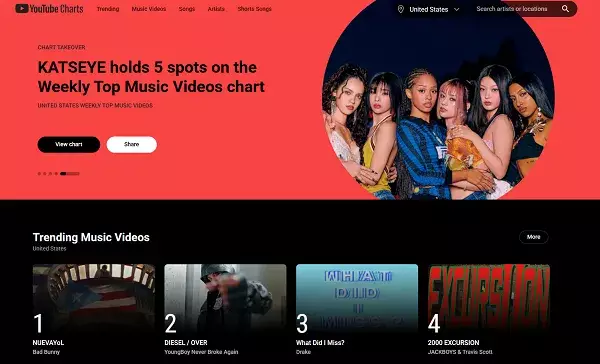Since its inception, YouTube’s approach to showcasing trending content relied heavily on broad, crowd-sourced lists that aimed to encapsulate what was popular across the platform at any given moment. The “Trending” page served as a central hub, offering users quick access to viral videos that everyone was talking about. However, the dynamics of content consumption have fundamentally shifted, rendering this one-size-fits-all method increasingly obsolete. Today’s digital landscape is characterized by an explosion of niche communities, micro-trends, and personalized content pathways that cater to highly specific interests. This fragmentation means that universal trending lists no longer genuinely reflect the diverse ways in which viewers discover and engage with content.
YouTube’s decision to phase out its traditional Trending page in favor of category-specific charts signifies a strategic acknowledgment of these shifts. Instead of a single, oversimplified ranking, the platform is embracing a multifaceted discovery system that highlights what’s popular within particular genres or communities. Such a move isn’t just a cosmetic tweak; it’s a fundamental recalibration toward fostering meaningful engagement within micro-cultures. It recognizes that a fan of indie music, for example, might rarely benefit from a broad “Trending” list dominated by pop hits or mainstream viral clips. By offering targeted channels like “Trending Music Videos” or “Weekly Top Podcast Shows,” YouTube aims to align content visibility with user interests more precisely.
The Impact of Niche Segmentation on Content Discovery and User Experience
This switch will undoubtedly influence how users interact with the platform. For years, the trending section was a key driver for casual viewers seeking quick hits of viral content, but it also risked oversimplification—reducing complex cultural movements to a few top-ranked videos. Now, by segmenting trending content into categories, YouTube encourages users to delve deeper into specific topics, potentially uncovering content from smaller creators or niche communities that might have been overshadowed before.
However, this approach also raises questions about visibility. While tailored charts increase relevance for targeted viewers, they might reduce the sheer surprise factor associated with browsing a universal “Trending” list. Users might miss out on discovering unexpected or cross-genre videos that could spark new interests. Yet, the promise lies in more meaningful engagement: viewers are more likely to connect with content that resonates with their unique preferences, ultimately leading to higher satisfaction and longer watch times.
The platform’s retention of the Gaming Explore page indicates an understanding that certain categories maintain broad appeal—a strategic move to preserve trending visibility within highly active communities. For other categories, personalized recommendation engines, reinforced by machine learning, will play an even greater role in surfacing content aligned precisely with user tastes. This means that content discovery becomes less about being thrown into a trending vortex and more about an intelligent journey through tailored, relevant feeds.
Personalization vs. Broad Trends: The Future of Content Consumption
Ultimately, YouTube’s pivot highlights a broader philosophical shift in digital content consumption: from passive scanning of popular videos to active, interest-driven exploration. The platform recognizes that micro-trends and community-based content are the new currency, shaping engagement more profoundly than broad, platform-wide trend lists ever could. Personalized recommendations—algorithmically crafted to reflect individual viewing habits—will now be the primary pathway for discovery, with trending categories serving as supplementary tools rather than main features.
This move also hints at a subtle empowerment of creators within specific niches. While massive, mainstream viral videos still attract large audiences, smaller creators within micro-communities may now have a better shot at visibility within their respective categories. Over time, this could deepen content diversity and foster a healthier ecosystem where quality, relevance, and community engagement take precedence over fleeting viral fame.
It’s important to recognize, however, that the disappearance of prominent trending banners may marginalize a less engaged but curious subset of users. Some casual viewers rely on quick, broad trend lists to stay updated without actively hunting for niche content. Whether this change will reshape overall platform engagement remains to be seen, but it undeniably marks a strategic move toward more refined, user-centric discovery models. If successful, this transition could set a precedent for other platforms striving to balance broad appeal with niche relevance in the crowded digital content space.


Leave a Reply